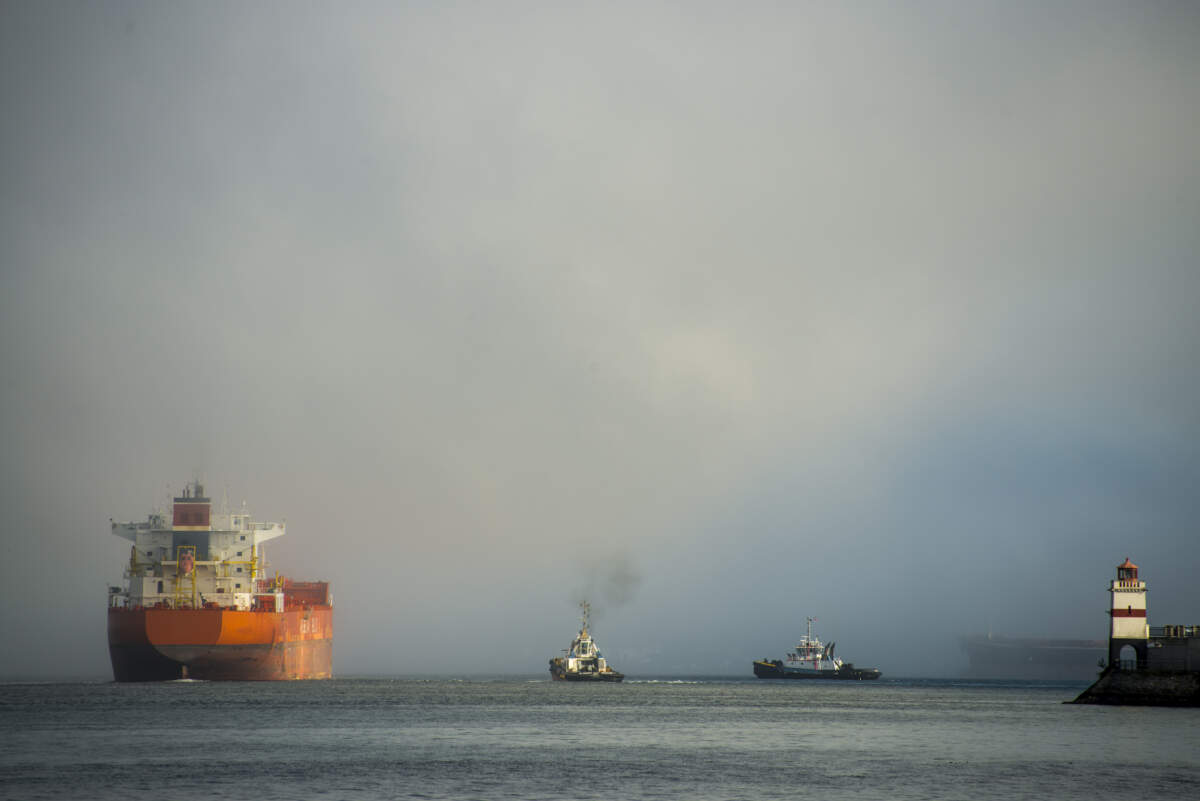
Canada’s merchandise trade surplus with the world was $1.2 billion in October, nearly double September’s $607 million total. Exports rose 1.5%, while imports were up 0.6% according to Statistics Canada’s monthly report.1
It’s important to note that a 2.1 cent depreciation in the average value of the Canadian dollar relative to the US dollar contributed to these figures. Measured in US dollars, exports dipped 1.3% as imports fell 2.2%.
Exports Rise in 8 of 11 Sections
Exports totaled $67 billion in October, an increase of 1.5% over the previous month. Export prices were responsible for most of these gains, with the real (or volume) terms showing a more modest 0.1% increase.
Consumer goods exports led the way, climbing 9.7% on the month. The largest factor here was a 20.7% gain in the exports of pharmaceutical products.
Farm, fishing, and intermediate food products shot up 10.2% in October, reaching a record high of $5.5 billion. Canola (+73.8%) and wheat (+18%) were most responsible, owing to a combination of high yields and high prices.
Exports of aircraft and other transportation equipment reached $2.4 billion (+17.5%), while exports of metal ores and non-metallic minerals climbed 13% to $3.1 billion, a record high.
These gains were partially offset by a 15% decrease in the export of metal and non-metallic mineral products. Most responsible for this was a 41.4% drop in exports of unwrought gold, silver and platinum group metals.
Imports Increase in 6 Categories
Imports totalled $65.8 billion in October, a rise of 0.6%. Imports were off 0.9% in real (or volume) terms.
Imports of motor vehicles and parts led the way with a 4.6% increase, with passenger cars and light trucks up 6.3%. Metal and non-metallic mineral products rose 6.5%, while energy product imports increased 8.4%.
Record High Exports to China
October saw a 2.2% increase in exports to countries other than the United States. The largest factor here was a notable 25.4% increase in exports to China ($3.3 billion). Canola, oilseeds and wheat were major factors in this climb.
Imports from countries other than the US were up 1.8%.
Canada’s trade deficit with countries other than the US inched up from $8.7 billion to $8.8 billion while our trade surplus with the U.S. increased from $9.3 billion to $10 billion.
Friendshoring and Increased Trade with Europe
Geopolitical tensions with China have given rise to the term ‘friendshoring’ and the general concept that trade should be streamlined toward perceived allies. Canadian Alliance President William McKinnon believes that the shift is underway.
“I see a lot more trade going on now with Europe. I was talking to one of our clients the other day and they’ve just established a new line of products coming in from Turkey,” says McKinnon, adding “It’s a product that’s readily available in China, but they’ve chosen a market that’s perceived to be more stable.”2
US Interest in Canadian Mineral Mining
These same concerns have prompted the US military to take an interest in funding Canadian mining projects.3 The investments would aim to decrease reliance on China for critical minerals necessary for the production of electronics, cars, batteries, and weapons. McKinnon expresses mixed emotions about the investments.
“I like the fact that Canada controls its own destiny,” he says. “I’m always uncomfortable with more powerful nations taking a position that impacts our natural resources.”
McKinnon concedes that there may be good reason for such developments.
“I think there may be things behind the scenes that we don’t know about that are strategic in nature regarding global security and how things transpire.”
COP27 Calls on Cargo Ships to Reduce Emissions
The recent COP27 meeting cast a spotlight on emissions from cargo ships, challenging the industry to improve.4 McKinnon calls it a moral obligation to protect the environment, but acknowledges that dollars will ultimately be the deciding factor.
“It’s about money, it’s as simple as that,” he says. “The industry operates in a relatively freewheeling manner; they’re going to do what’s best for business within the parameters of the rules that exist. I think there have to be tax incentives in place and rules that are punitive in nature.”
McKinnon is hopeful that market conditions will set the stage for improvement.
“Given that the shipping industry has become extremely profitable again, their motivation to not do it is less than it was when they were losing billions of dollars.”
Cited Sources
1 Government of Canada, Statistics Canada. “Canadian International Merchandise Trade, October 2022.” The Daily – , December 6, 2022. https://www150.statcan.gc.ca/n1/daily-quotidien/221206/dq221206a-eng.htm.
2 Personal Communications with William McKinnon
3 “U.S. Military Weighs Funding Mining Projects in Canada amid Rivalry with China | CBC News.” CBCnews. CBC/Radio Canada, November 13, 2022. https://www.cbc.ca/news/world/u-s-military-mining-projects-canada-1.6649522.
4 “Cargo Ships Burn a Lot of Fossil Fuel. Changing That Will Be Hard | CBC News.” CBCnews. CBC/Radio Canada, November 4, 2022. https://www.cbc.ca/news/world/global-shipping-emissions-1.6636413.
